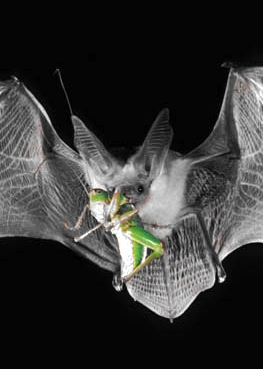Bats and birds trim bug herds
 The natural pest-control services provided by tiny bats and birds could be worth millions to Australian agriculture, according to recent studies.
The natural pest-control services provided by tiny bats and birds could be worth millions to Australian agriculture, according to recent studies.
UNE PhD student, Heidi Kolkert, is researching the habits and diets of microbats and insectivorous birds, in order to inform farmers on how best to harness the natural form of pest control.
Ms Kolkert’s research has shown that many small birds, including fairy-wrens, fantail-warblers and flycatchers, and several threatened species of bat, are voracious predators and can be very effective in controlling pest populations within valuable crops.
“Studies have shown that the invertebrate pest control service provided by microbats and birds in agricultural systems is worth billions of dollars to farmers worldwide every year,” Ms Kolkert said.
“Obviously natural pest control is preferable to using chemicals, both for consumer health and the environment, but based on the data and evidence I collect, I want to inform farmers of the other benefits of encouraging bat and bird populations.
“In particular, I want to give these species an economic ‘value’ to landowners who are interested in embracing natural pest control.”
Kolkert says that agricultural intensification and habitat destruction in many cropping areas have put huge pressure on populations of bat and bird species. Some are now listed as threatened or endangered.
“To ensure healthy populations of these pest-eating species, it’s vital that patches of native vegetation are maintained in cropping areas,” she said.
“This leads to a win-win situation for farmers and the environment because not only does it encourage a free, natural way to control pests, it also preserves our threatened native species, provides shade for livestock, and results in wide-reaching environmental benefits.”








 Print
Print